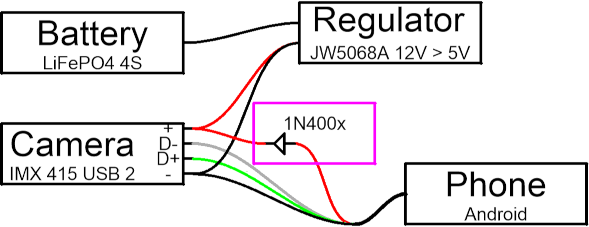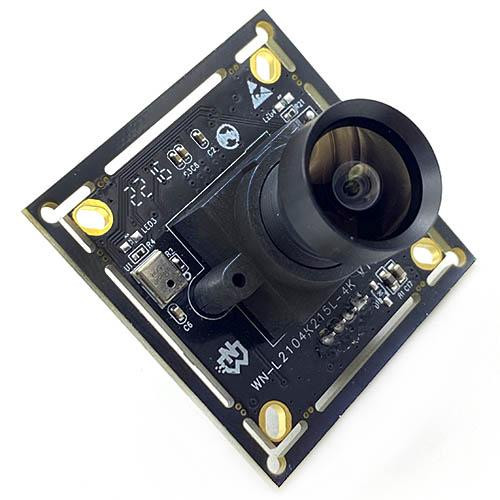This post is about using a USB camera connected to a phone for the purpose of having a complementary rear-view mirror. The technology is, of course, more widely applicable. The reason for doing this is that the factory-supplied camera (Fiat Ducato 2021) is of mediocre quality and several “car cameras” on offer have proved to be problematic.
This post is ‘under construction’.
Table of Contents
Ingredients
- Phone (Android in this case):
The phone should be of sufficient quality (OLED) and screen size to work well. - USB camera:
Quality should be good, with a proper controller and sensor. - Power supply:
5V of sufficient quality, preferably tapped from LFP and otherwise the car battery. - USB cabling:
Due to the distance, USB signals should be amplified with a special extension cable. - Software:
‘USB Camera Viewer’. This app has “mirror” functionality and is able to directly recognize the camera, making it hassle free. A paid version is obvious in case of permanent use.
Powering USB cameras
Direct power
Such a camera can be directly connected to a computer or a phone. This, of course, drains the phone battery quickly.

Power from Raspi
Another way, a bit out of the box:
USB video camera <---> Raspberry Pi <---> MonitorThis solves two challenges. The sum of the limited lengths of USB and HDMI cables is enough for large distances. It can be a dedicated solution for viewing only. It also creates possibilities to use sparse OLED displays in the range between 8″ and 12″. This is an example.
Power from LFP
At your own risk!!
USB-based cameras often need 5V. To turn 12V into 5V, a “step down converter” or, a “step-down
switching regulator” is required.
How can we work around that?
A popular voltage regulator is type MP1584 (datasheet). Another regulator is offered as a PCB under the names “Mini 560” and “Mini 560 Pro” . Here, the base is a JW5068A chip with slightly higher power (datasheet cached).

USB camera
USB camera “Lightburn” (IMX415+SPCA2688)

This is a USB camera with a Sony IMX415 sensor (Japan) and a SunplusIT SPCA2688 compressor (Taiwan). It is produced by Weinan Electronics with module size 38*38mm, named WN-L2104.K215L. There is a spec-sheet, cached here.
Background
Fiat Ducato “as is”
From the FIAT factory (2021), a mediocre rear-view camera and console monitor is available for the Ducato – it does its job, nothing more. The side mirrors, however, are excellent. We are talking about a van with a closed rear where a camera is fitted from the factory. That camera only works when reversing however, camper owners tend to turn them on permanently. From a safety point of view, that camera more or less satisfies, both legally and practically, but image quality is poor.
Dash-cam approach
An additional (rear-view) camera that works permanently with a larger field of view is purely an added safety feature. So there is no reason not to do it. It is, of course, a reason to do it as proper as possible. However, in three years, two additional cameras have stopped functioning.
A permanent (electronic) rear-view mirror was missing and as a solution, an electronic mirror – with an additional rear-view camera was installed. This proved to be so unreliable that another solution was desirable. What was wrong with the current solution – an electronic mirror recording both front and back?
- Electronic interior mirrors have too little screen brightness in strong sunlight.
- This is where you want OLED.
- The built-in front camera delivers reasonable videos.
- Despite being relative high resolution for analogue, the rear camera is a PITA.
- Something like: doesn’t work, reboot, doesn’t work, reboot, works. I was done with it.
- What turns out? Modern car lead-acid batteries are never full in order to be able to absorb energy from braking – welcome to Euro 6. Voltage is lower as result and long, too thin, power lines cause an extra Voltage drop, creating problems.
- During night time the light sensitivity is not enough to make it a valuable addition.
- Something like: doesn’t work, reboot, doesn’t work, reboot, works. I was done with it.